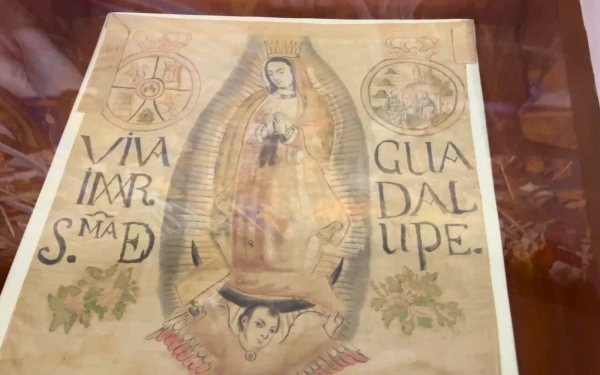This September 15 and 16, Mexico celebrates the 214th anniversary of the beginning of its independence, a process that lasted 11 years, in which the Catholic Church, and in particular the clergy, played a fundamental role.
The Mexican War of Independence, which began on September 16, 1810 with the “Cry of Dolores”—pronounced by the priest Miguel Hidalgo y Costilla—marked the beginning of the fight for emancipation from Spanish rule.
Receive the main news from ACI Prensa by WhatsApp and Telegram
It is increasingly difficult to see Catholic news on social media. Subscribe to our free channels today:
Father Hidalgo, known as the “First Insurgent and Father of the Nation,” carried an image of the Virgin of Guadalupe as a banner, mobilizing the people under his protective mantle.
In an interview with ACI Prensa, Father Eduardo Chávez, director of the Higher Institute of Guadalupe Studies, highlighted that the Virgin of Guadalupe was key in the popular mobilization, since “taking the banner of Guadalupe from the image, she knew how to unite everyone “around these battles, this way of thinking”

Furthermore, Father Chávez, considered one of the greatest experts on the Virgin of Guadalupe, pointed out that Father Hidalgo used a scapular with the image of the Virgin of Tepeyac, “which some nuns had made for him and he put it in his heart”.
Another prominent priest was José María Morelos y Pavón, known as the “Servant of the Nation,” who continued the fight after the death of Father Hidalgo. Morelos organized the Congress of Anáhuac, the first independent legislative body of the Viceroyalty. There he presented the “Sentiments of the Nation”, a document considered as a direct antecedent of the current Constitution of Mexico.
According to Father Chávez, before being executed, Father Morelos had the “grace of being able to pray in none other than the Pocito”, a chapel located a few meters from the Basilica of Guadalupe.
The journalist Carlos Villa Roiz, author of the book Independence Betrayednoted that approximately 400 priests and religious were involved in the fight for independence.
In an interview with ACI Prensa, he indicated that among the most prominent were Father Mariano Matamoros, who fought alongside Morelos; Fray Servando Teresa de Mier, one of the first deputies; and Father Matías de Monteagudo, signatory of the Independence Act.
Villa Roiz explained that many priests participated “at the head of armed groups as chaplains.” Still others got involved from the pulpit, “with sermons that openly defended the Independence of Mexico.” He even mentioned that some of them took up arms, arguing that it was “a just war” in which they felt an obligation to participate.
Unfortunately, Villa Roiz noted, many of these priests and their contributions “are forgotten, in part, by anticlerical governments.”
He recalled that between 1926 and 1929, during the religious persecution under the government of President Plutarco Elías Calles “the federal army took convents, took libraries, burned them.”
He added that “there was a great loss of documents, which is regrettable and irresponsible,” a situation that also occurred during the war between Mexico and the United States between 1846 and 1848, when “documents were removed from the archive and hidden.” ”.
Father Chávez encouraged Mexicans to see the national holidays as an opportunity to remember “that we are all the family of God, the family of God’s love through the Virgin of Guadalupe.”
